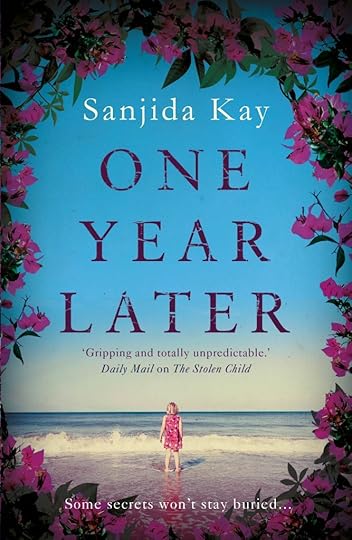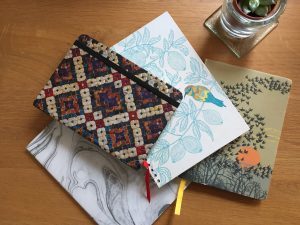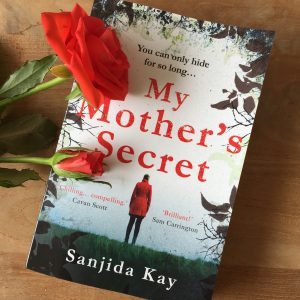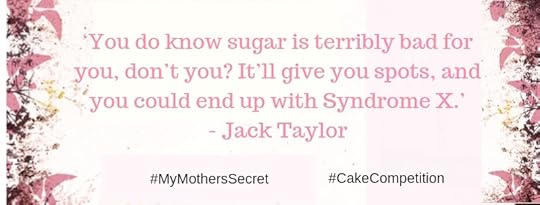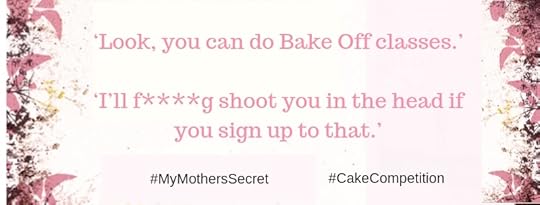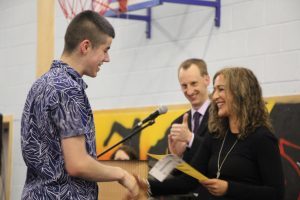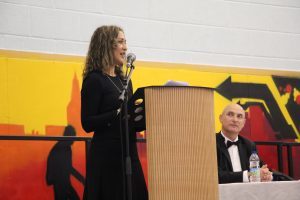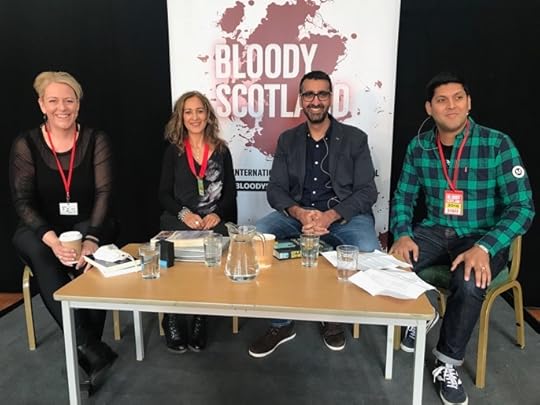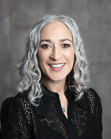Sanjida Kay's Blog, page 7
June 10, 2019
One Year Later – out 1 August
I’m so thrilled – my fourth psychological thriller is out on 1 August. Just in time for you to pack in your bag for a beach holiday! It’s partly set in Somerset and Bristol, but mainly on a seemingly idyllic island in Italy. It’s available to pre-order.
Some secrets won’t stay buried….
Since Amy’s daughter, Ruby-May, died in a terrible accident, her family have been beset by grief. One year later the family decide to go on holiday to mend their wounds. An idyllic island in Italy seems the perfect place for them to heal and repair their relationships with one another.
But no sooner have they arrived, than they discover nothing on this remote island is quite as it seems. And with the anniversary of the little girl’s death looming, it becomes clear that at least one person in the family is hiding a shocking secret. As things start to go rapidly wrong, Amy begins to question whether everyone will make it home…
March 24, 2019
Blueprint for a house…and a story
In May 2017 we bought a house in Somerset. It was originally built in the 1950s and for almost two years we’ve been renovating it. And it’s finished! I hesitate to do a huge cheer in case something else falls apart or starts leaking – but we are absolutely delighted. In fact, our house was shortlisted for an award (LABC SouthWest Building Excellence)!
While we were working on the house (yup, it’s a stressful as everyone on Grand Designs tells you), it made me think about the similarities between building a house and writing a novel. Both kinds of projects require vision, creativity, tenacity, an eye for the big picture, being dogged about detail, technical skill, imaginative flair and fair amounts of sheer blood, sweat and tears.
Here’s what I learned about the parallels between designing a house and plotting a novel:
[image error]
Vision: We had a clear idea of how we wanted our house to look – we sent a nine page brief to our architect. Julian Mills of Orme Architecture then drew a picture of what our house was going to look like, and I do believe, it’s come out as we’d all hoped it would! With a novel, you might have a vague idea of what’s going to be in it, a general feeling for its shape, a wisp of atmosphere, a hint of the kinds of characters that will people it. You might want to create an ideas board or a mood board, as we did on Pinterest (and I also do for whatever novel I’m working on). You can have a look at my previous mood boards here.
However, at some stage, you’re going to want to firm up this vision so that you can communicate your idea succinctly to publishers and agents to make them excited about your novel, as well as understanding what they’re going to get when it’s finished. There’s nothing so dispiriting as giving your novel to an editor who was expecting something totally different…
[image error]
Blueprint: Orme Architecture used the original design and our thoughts to create a blueprint. This enabled us, the client, to see what our house would be like, as well as showing the builders exactly what to do, from which wall to take out, to where the light switch should go in my office.
You wouldn’t start building a house without planning it first…why do the same with your novel?
Some of you may not like planning your novels. You may just want to start writing. And that’s fine, but my advice is, you may spend a long time writing your way into finding out what your novel is actually about, and even longer editing it if you haven’t created a blueprint. This is your outline for yourself, which you may wish to share with your writer’s group, your agent and your editor. It tells you how the plot will unfold and how you’re going to structure your novel.
Creating a blueprint is the skeleton for the novel, upon which to hang your beautiful words and well-crafted sentences. Effectively, it’s going to tell you where the walls will be built (major twists) as well as where the light switches will be fitted (minor revelations). It’ll help keep your writing focused on your theme: in our house it was minimalism, white walls and wooden floors, with a Swedish vibe; in a novel, it might be on identity, for instance, which was one of the themes in my thriller, The Stolen Child.
[image error]
Adaptability: Life never goes according to plan. You can create the most watertight of design briefs and building specs, but there’s no predicting what can happen. One then needs to adapt, whilst still retaining the big picture in mind. For instance, we ordered a beautiful kitchen – the design looked stunning on paper, and the kitchen fitters, the architect and the builders shared the blueprint with each other. However, when the kitchen arrived, no one had told the fitters that we had a steel beam running through the middle of what should have been the dishwasher (the beam was put in to hold our house up when we took out all the walls downstairs).
Sticking rigidly to the outline of your novel will stifle your creativity. New ideas and inspiration will come to you; characters will ‘act’ in ways you hadn’t foreseen. Also, things will go wrong – you’ll realise your research was insufficient, you may be left with a plot hole, or what seemed to work on paper before you began writing, just doesn’t, or it’s too slow, or too obvious. Or your publisher hates it.
 Compromise: Most of our compromises with our house were to do with money. We had a comparatively small and fixed budget. We compromised on major design features – for instance, we wanted to open up the attic space but discovered we had four species of endangered bat sharing our living space! We didn’t touch the roof, and the bats are still happily (noisily) living in our attic. We compromised in minor ways – the brand new ensuite bathroom has the original shower screen, which is old and doesn’t match.
Compromise: Most of our compromises with our house were to do with money. We had a comparatively small and fixed budget. We compromised on major design features – for instance, we wanted to open up the attic space but discovered we had four species of endangered bat sharing our living space! We didn’t touch the roof, and the bats are still happily (noisily) living in our attic. We compromised in minor ways – the brand new ensuite bathroom has the original shower screen, which is old and doesn’t match.
How far are you willing to compromise with your novel? If you want to finish your book in two years instead of ten, you might need to give up on going out in order to have the time to write; you might need to accept that you’re not going to be Margaret Atwood or James Patterson and be fine about your writing skills and renumeration; you might have to change the story or the characters to satisfy your publisher.
What’s important is to hold on to your original vision, but remember that to achieve it, you will have to depart from it to some extent, and be willing to adapt and compromise.
Our house is in an AONB – an Area of Outstanding Natural Beauty; we have a large garden with stables requiring a little love and attention, and three acres of meadow and woodland. I veer from thinking I’m the luckiest person alive to despair at how we will manage with limited time, resources and skills. My vision is to manage our land for writers and for wildlife… I’d like to tell you our story, from inner city Bristol, to the wilds of Somerset, along the way sharing writing tips and experiences, as well as our attempts to get on top of the brambles and bracken!
Let me know what you’d like to know more of – and if you’re a writer, do you create a blueprint before you begin?
March 4, 2019
Letter to my younger self
What would you tell yourself if you could? The Royal Literary Fund recently gave me the opportunity to write and record a letter to my younger self.
I know your grammar is… idiosyncratic would be the kindest way to put it. But you can learn where commas go, you know!
Do have a listen and let me know what you think!
My most important advice to you is: please don’t be frightened of failing, of falling, of learning, & of acknowledging that you need help
February 1, 2019
My writing talisman
My writing talisman is a beautiful painting by artist, Elaine Jones. It’s of Cornwall – have a look to see why I love it so much and why it inspires me.
What inspires you to write?
December 23, 2018
The best books I’ve read in 2018
My best reads of 2018 – a mix of literary thrillers with my two favourite non-fiction books thrown in for good measure. Enjoy! And have a wonderful Christmas!
Paper ghosts by Julia Heaberlin
A beautifully written Gothic road trip.
Carl Feldman is old and is suffering from dementia. One day, a young woman turns up at his retirement home, saying she’s his daughter and she’s taking him for a short holiday. She is, in fact, the sister of a girl Feldman is suspected of killing and she hopes she’s going to find out what he did to her sister as well as all the other young women’s believed to have murdered… This has the hallmarks of an all American road trip through Texas except that the two people going for a ride are a young woman hell-bent on revenge and an elderly serial killer who may or may not remember his past…
Little Fires Everywhere by Celeste Ng
All her life, she had learned that passion, like fire, was a dangerous thing. It so easily went out of control.
This is a wonderfully written literary thriller about motherhood…and what happens when you don’t follow the rules.
In Shaker Heights, a placid, progressive suburb of Cleveland, everything is meticulously planned – from the layout of the winding roads, to the colours of the houses, to the successful lives its residents will go on to lead. And no one embodies this spirit more than Elena Richardson, whose guiding principle is playing by the rules.
Enter Mia Warren – an enigmatic artist and single mother- who arrives in this idyllic bubble with her teenage daughter Pearl, and rents a house from the Richardsons. Soon Mia and Pearl become more than just tenants: all four Richardson children are drawn to the pair. But Mia carries with her a mysterious past, and a disregard for the rules that threatens to upend this carefully ordered community.
When old family friends attempt to adopt a Chinese-American baby, a custody battle erupts that dramatically divides the town – and puts Mia and Elena on opposing sides. Suspicious of Mia and her motives, Elena is determined to uncover the secrets in Mia’s past. But her obsession will come at an unexpected and devastating cost…
How to Stop Time by Matt Haig
‘The first rule is that you don’t fall in love,’ he said… ‘There are other rules too, but that is the main one. No falling in love. No staying in love. No daydreaming of love. If you stick to this you will just about be okay.’
Imagine Vampire Lestat meets The Time Traveller’s Wife. A gorgeously rich and multi-layered novel about the impact of time on the human spirit.
Tom Hazard has a dangerous secret. He might look like an ordinary 41-year-old history teacher, but due to a rare condition, he’s been alive for centuries. The only thing that might protect him from being discovered, is the one thing that could save him…
Eleanor Oliphant is Completely Fine by Gail Honeyman
If someone asks you how you are, you are meant to say FINE. You are not meant to say that you cried yourself to sleep last night because you hadn’t spoken to another person for two consecutive days. FINE is what you say.
Eleanor Oliphant is lonely, isolated and deeply lacking in social skills. She has no friends, and her life consists of work and phone calls with Mummy. Until, that is, she meets Raymond, a bumbling, sweet guy who works in the IT department. But while Raymond does his best to befriend Eleanor, we gradually learn the terrible truth about Mummy…
An uplifting story about the power of friendship, with a splinter of ice at its heart.
The Cry by Helen Fitzgerald
When a baby goes missing on a lonely roadside in Australia, it sets off a police investigation that will become a media sensation and dinner-table talk across the world. Lies, rumours and guilt snowball, causing the parents, Joanna and Alistair, to slowly turn against each other.
Finally Joanna starts thinking the unthinkable: could the truth be even more terrible than she suspected?
A brilliantly crafted psychological thriller, which has been made into a visually-stunning TV series.
All the Beautiful Lies by Peter Swanson
A film noir tale of dark taboos and dangerous obsessions.
Just before Harry Ackerson’s college graduation, his beautiful step-mother, Alice, calls with shocking news. Harry’s father is dead and the police think it’s suicide. Devastated, Harry returns to his father’s home in Maine. There, he and Alice will help each other pick up of the pieces of their lives and uncover what really happened to his father. But who is Alice really and what is she hiding?
How Far We Fall by Jane Shemilt
A slow-burning Macbethian tale of revenge and betrayal.
Beth and Albie seem to have the perfect marriage. But Beth has a dark secret – a long-running affair with Albie’s boss, Ted. Albie is blinded by ambition and his admiration for Ted, but when Ted’s patronage starts to wane, Beth sees this as the perfect opportunity to satisfy her husband’s ambitions and have her revenge on Ted in one fell swoop.
Old but gold
Rebecca by Daphne du Maurier
Last night I dreamt I went to Manderley again . . .
A powerful and haunting Gothic psychological thriller.
At first, the second Mrs de Winter cannot believe her good fortune: a lady’s maid and an orphan, she’s swept off her feet by the rich and dashing Maxim de Winter. But when she arrives at his country estate in Cornwall, she realises how large a shadow his first wife will cast over their lives…her presence seems to be a lingering evil that threatens to destroy their marriage from beyond the grave.
Nutshell by Ian McEwan
So here I am, upside down in a woman…
So begins Nutshell, narrated by a foetus who sounds like an erudite, arrogant, aristocrat. Nearly nine months old, and fuelled by podcasts and Sancerre, our exceptionally young man is concerned because his mother and her lover are about to do something terrible to his father.
A combination of psychological thriller, treatise on modern malaise, ode to poetry and homage to Hamlet, this could be insufferable, but manages, to be wry, poignant, gripping as well as being wonderfully written.
Full review here
The Woman in the Window by A.J. Finn
A domestic noir inspired by Hitchcock’s Rear View Window: psychologist Anna Fox has suffered some kind of trauma, which has left her agoraphobic and confined to her house in New York.
This is a beautifully written book, which starts gently before the stomach-clenching, jaw-dropping twists begin. The characters are brilliantly realised, the guilt, the fear and the claustrophobia are palpable.
Full review here
Non-fiction
The 7 Habits of Effective People: Powerful Lessons in Personal Change by Stephen Covey
Begin with the end in mind.
One of the most influential books I’ve ever read.
I assumed The 7 Habits was aimed at business leaders, but the principles described – on living one’s life with fairness, integrity, dignity and compassion – are one’s that apply to all of us, both personally and professionally. I’ve read this book twice and will, no doubt, keep returning to it.
On writing…
Monkeys with Typewriters: How to Write Fiction and Unlock the Secret Power of Stories by Scarlett Thomas
Part of becoming a writer is working out which of all the strange thoughts you have in a given day are worth exploring further.
Scarlett Thomas teaches creative writing at Kent University, as well as publishing YA fiction. In Monkeys with Typewriters she shares the lessons she’s learned and the lectures she’s given on creative writing. This is a wonderful book, managing to be both academic in its analysis, as well as informal in style. Original, funny, inspiring and engaging, it’s particularly useful for beginner writers to help them get started; advanced writers will enjoy its insightful dissection of great plots from Plato to The Matrix and Tolstoy to Toy Story.
December 7, 2018
How I write
The Royal Literary Fund has recorded a mini -podcast with me on how I write – with a black coffee, and some dark chocolate and then I begin!
‘Writing a novel feels like being an ultra-marathon runner, it’s going to be a gruelling slog to reach 90,000 words and I will be unable to pause, to breathe properly, to take in the view until then.’
You can listen here:
What do you think? Let me know how you write.
December 5, 2018
How to write a thriller
In a few days time I’m heading to Ted Hughes’ old house, Lumb Bank, in Hebden Bridge, to teach an Arvon Foundation course on how to write a literary thriller, with fellow author, Adam LeBor. I’m looking forward to meeting guest author, Felica Yap, who wrote, Yesterday, as well as returning to the wilds of Yorkshire where I grew up.
Most of what one can learn about writing a thriller will apply to any kind of fiction – character, plot, setting, dialogue, language, style and voice are, of course, vitally important. But what is critical in a thriller is information: who knows what, and when and where and how did they or will they find it out? The key is to think about what is going to happen next. If you set up a question in the first few pages, finding out the answer is what will keep readers turning the pages.
Think of Rebecca by Daphne du Maurier, which begins:
Last night I dreamt I went to Manderley again.
Immediately this raises small questions: what is Manderley? Who is telling us this story? Why aren’t they at Manderley anymore? What is so special about Manderley that our unknown narrator dreams about this place? And then quickly we’re introduced to the larger questions: who was the first Mrs de Winter? What was she was like? What happened to her – and what will happen to our protagonist? These questions are what keep us reading.
The two main ways the writer can heighten this sense of anticipation is through the structure of the novel, and via suspense. The structure of the novel is essentially about presenting information in a particular order. For example, in a psychological thriller, moving the second most thrilling or exciting moment in the story to the prologue can create anticipation because we know that something bad is going to happen, yet in the first few pages, that terrible deed has not yet occurred.
For instance, here’s the prologue of Bone by Bone.
http://www.sanjida.co.uk/wp-content/uploads/2014/09/Bone-by-Bone.mp3
Another example of how structure can lead to anticipation is through the withholding of information, by delaying telling the reader the answer to a question: leaving a scene early, just before the information is about to be revealed, is one way to do this. The resulting cliff hanger will hopefully make the reader want to find out what happens next. Think of Harry Potter: The Philosopher’s Stone by JK Rowling. When the Dursleys are hiding on a boat at sea and someone beats down the door and steps inside, we’re on tenterhooks – and this is where the chapter ends.
Of course, endless cliff hangers could well become annoying, so another way of delaying answering the question is by complicating the story. This can be done by adding more information and greater levels of complexity – through a sub-plot, for instance, or by switching the Point Of View to another character.
Suspense, in contrast, is about who knows what at which point. Do the characters know, or only one of them? Does the reader know the secret but the characters do not? For instance, in My Mother’s Secret, the main protagonist, Emma Taylor, knows the secret, and her daughter, Stella, is trying to discover it. The reader finds out the secret about half-way through the novel, but the daughter does not – which is dramatic irony – and, I hope, has readers swiftly turning the pages, hoping against hope that Stella doesn’t do anything too foolish to jeopardise everyone’s safety….
I write, ‘My mother has a secret.’
If you’re interested in writing novels but missed signing up to my Arvon course, do come along to my next WriteHere creative writing course in Bath.
October 7, 2018
Cake competition!
My Mother’s Secret is out in paperback! To celebrate, I’m launching a competition.
As I’m sure you’re aware my love of cake has made its way into My Mother’s Secret. Not only is the protagonist, Emma Taylor, a baker, but quite a few kinds of cake are mentioned throughout My Mother’s Secret.
So what better way to celebrate the paperback release than with cake and prizes!
I’ll be holding a competition on my Facebook page from the 7th – 14th of October to see if anyone can guess how many types of cakes there are in My Mother’s Secret! The winner will receive a signed paperback copy of My Mother’s Secret and a £10 voucher to spend in Hart’s Bakery! I spent quite a bit of time at Hart’s Bakery when I was researching My Mother’s Secret, and ‘Kate’s’ (the bakery that Emma Taylor works at) is based on it, so it only seems fair to let you indulge there too!
All you need to do to enter is post your guess on my Facebook page and tag @SanjidaKayAuthor with #MyMothersSecret. If you add a photo of your favourite sweet treat you’ll be entered TWICE!
The competition ends on the 14thof October and I’ll be selecting the winner the following day.
Good luck!
September 30, 2018
I’ll be your coach
I’ve just returned to working for charity, First Story, this month. First Story’s aim is to change young people’s lives through writing, particularly those who might be disadvantaged socio-economically, and/or suffer from a lack of confidence. I had my first creative writing workshop with the school I’ll be Writer in Residence for last week. Before I met the group of students I’ll be working with, I was wondering what to tell them. I want to inspire them to be writers, as well as to give them the confidence to flourish, but I’m not sure that I personally feel like a teacher, or even know that creative writing can be taught. In spite of having published twelve books, I don’t have any qualifications in teaching and I have none in English past the age of 15.
So what I said was:
I am your space: I am your space in which to think about and practise the craft of writing.
I am your permission: I give you permission to be writers.
I’m never going to say to a single one of these young people that they are rubbish, that they cannot do it, that they need to demonstrate proficiency in key aspects of the curriculum, pass an exam or sit a test. I hope that having the time, space and permission to ‘have a go’ will help them blossom, both now and in the future.
Finally, I said:
I am your coach.
In most subjects taught in schools today, the educational model we follow is that you attend classes, practise, learn, graduate and then make your way on your own. But in sport, the model is that you are never, ever done. Everyone needs a coach. Even the greatest football player or Olympic athlete needs a coach. There isn’t a fool-proof path to become a premier league player, nor to win a gold medal at the Olympics. What players do is that they learn, they practice and they are coached. It is a never-ending process of attempting to improve under the guidance and tutelage of a person who has your back. The way to become a great cyclist, gymnast, football player or even a writer is with help. It is not, as someone tweeted at me recently, about reading a few articles online and doing it by yourself.
As Atul Gwande, surgeon and author of Checklist, says, ‘Coaches are on to something profoundly important…They build on your skills and address your weaknesses.’ Gwande, who is seen as being top of his field in general and endocrine surgery, hired a coach, thinking that this fellow surgeon, would have little to teach him. After the first session, the coach had made pages of notes on how Gwande could become a better surgeon. Two years later, Gwande’s techniques had indeed radically improved.
For me personally, I’ve benefitted greatly for the coaching I’ve received from my agent, Robert Dinsdale, my many editors over the years, and my writing buddies. In my role as a Royal Literary Fellow, I frequently receive training and coaching from other fellows. I still believe that I could benefit from more help and dedicated coaching for my thriller writing. (Any volunteers?!) As Gwande says, ‘It’s not how good you are, it’s how good you’re going to be that really matters.’
September 23, 2018
Diversity in Fiction
I’ve written as a Jesuit priest in Outer Mongolia, a nine-year-old in inner city Bristol, a child abductor, an angry teenager, a man in his twenties, a Victorian lady trapped on an island in the Southern states of America at the turn of the Civil War. I’ve written about slaves, Buddhist lamas, racketeers and drug addicts, accountants and artists, actors and academics. As a writer, I want to tell any story I’m moved to, from the perspective of any character I wish, regardless of their race, religion and culture – or perhaps because of it.
My own background is that I’m half Bangladeshi, half Irish and grew up in Africa, Ireland, England and Wales in a Protestant-Catholic household, only distantly knowing the Muslim-American side of my family. Yet I rarely, if ever, read about anyone from a culturally diverse background in British fiction.
Many years ago, when Zadie Smith burst on the literary scene with White Teeth, and Salman Rushdie was still in vogue, I thought the situation was about to change. Cut to the present day. The long lists for most literary awards are still filled with white authors. The multi-culturalism this country is famous for is rarely represented in literature. You can buy a Dansak, raw sauerkraut, Thai green paste and a Za’tar rub in your local supermarket, but have you found a novel where the majority of characters represent the Nigerian-Welsh, the British Somali, the Ukrainian-Bristolian and the Russian-Irish kids in my (Asian-Irish-Scottish) daughter’s class?
In my own genre, crime, BAME (Black, Asian and Ethnic Minority) writers only make up 4% of all authors. Mixed race characters and authors are still few and far between. Worse, according to a report, Writing the Future, commissioned by Spread the Word and edited by Danuta Kean, which was published in 2015, BAME writers are often pressurised to produce characters and settings that conform to white middle-class stereotypes of racial minorities, and the places (‘exotic’, ‘gritty’) they believe them to live. Publishers tell me that my market, like that of the majority of writers in this country, is largely 35-55 year-old white women. Yet in a scant thirty years, it’s predicted that one in five people in this country will be from an ethnic minority.
For me the situation is a broader issue. As Kean says, ‘The big elephant in the room is class and socio-economic background.’ Those in the publishing industry, including agents, editors and people running literary festivals, are overwhelmingly white, middle or upper class. They, unlike many BAME candidates, are often educated privately and attended Russell Group universities (at a time when only 7% of the UK population has been privately educated and only 1% attended an Oxbridge University). Furthermore, BAME would-be publishers are frequently from families who can’t afford to subsidise them for a year or so as an unpaid intern in London. Kean comments, ‘Change is cosmetic and has not been structural or institutional.’
In other words, it’s not simply that British and American literature is not ethnically diverse, but that the very people deciding what is to be published and how it should be edited are largely not from diverse backgrounds, either in terms of their culture or their class. In this country, the children that borrow most of the books from libraries are British Asian…and yet, and yet, as adults, Asians are not buying or reading books. I’ve rarely attended an event where I was not in the minority solely down to my skin colour. And I’m still not reading books or seeing screen plays where the main characters are British Asian, so maybe this sector of the population are giving up because they are so overwhelmingly underrepresented in British fiction.
I think it’s fantastic that there are now initiatives to encourage more BAME writers into fiction, but until the publishing industry itself becomes more representative of the population as a whole (and pays interns and junior staff better), I fear these small shoots will not produce the multiplicity of multi-coloured blooms we crave.

